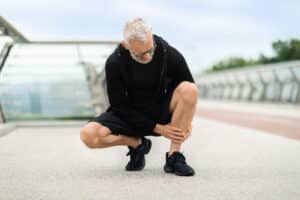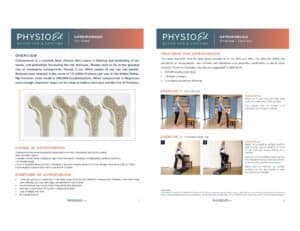Osteoporosis is a bone disease that can seriously complicate the lives of older adults. It often leads to broken bones, most commonly as hip or spinal fractures. Unfortunately, many older adults don’t know enough about osteoporosis management or prevention.
Whether or not you develop osteoporosis depends on your understanding of the disease. Knowing what makes for healthy bone and how to increase bone mineral density are your best tools to prevent osteoporosis before it begins.
A better understanding of osteoporosis and how to manage diagnosis can lead you to a healthier, longer life.
What Is Osteoporosis & Who Is At Risk?
Osteoporosis is a medical condition characterized by weak bones and an increased risk of bone fractures.
Healthy bone goes through a constant cycle of breakdown and regrowth. Osteoporosis occurs when bones lose calcium and other vital minerals more quickly than they can be replaced. This condition makes thinner bones more likely to fracture or encounter other problems when placed under physical stress.1
How Common is Osteoporosis?
Osteoporosis is relatively common and affects over fifty million adults in the United States. Women aged fifty and older make up more than half of that number. Even though men are at a lower risk of developing osteoporosis than women, they are not immune.
Peak bone mass—the time in your life when bones are the most robust and most resilient—occurs somewhere around your early twenties. Since bone mineral density diminishes naturally over time, anyone can be at risk for developing osteoporosis.
Low body weight, poor nutrition, lack of calcium or vitamin D intake, and chronic smoking or drinking can all contribute to osteoporosis risk.2
In addition to lifestyle factors, a family history can significantly increase your risk of osteoporosis or osteopenia. Certain medications (such as steroids) or living with a disease that causes bone loss (such as rheumatoid arthritis) are factors. Any condition that can decrease bone density increases your chances of developing osteoporosis.
Specifically, women are at higher risk of developing osteoporosis. Breast cancer and its treatment methods are of particular concern due to their secondary effects on bone health.8
Discussing your chances of developing osteoporosis with your doctor is crucial regardless of your health history.
Testing for Osteoporosis
It’s helpful to know how osteoporosis is diagnosed while learning how to prevent it.
DEXA Scans
Osteoporosis and osteopenia are most often detected using a bone density test, which evaluates the structure of your bones. This is done with a DEXA scanner, a specialized machine common in bone health clinics.
A DEXA scan results in a T-score, which compares your bone density to that of an average healthy person.
You may have had a DEXA scan in the past. If so, comparing results over time can give you a clear idea of your risk.
The following can help you to understand the outcomes of a DEXA scan:
- A T-score above or equal to -1.0 is considered in the normal bone density range.
- If your score is between -1.0 and -2.5, you have passed the threshold for osteopenia (low bone density).
- If your T-score is less than -2.5, you have passed the point for osteoporosis.
Following a DEXA scan, your doctor might advise more tests based on the findings to better understand your condition.3
Other Tests
Additional methods exist for detecting osteoporosis or indicating that it may become an issue. MRI scans and ultrasound imaging can reveal details about the structure and strength of your bones.
Blood tests may also check vitamin D levels and hormones linked to bone health.
Nonetheless, DEXA continues to be the most reliable method for detecting osteoporosis.
Once you know where you stand based on your bone density, you can explore your osteoporosis treatment options.
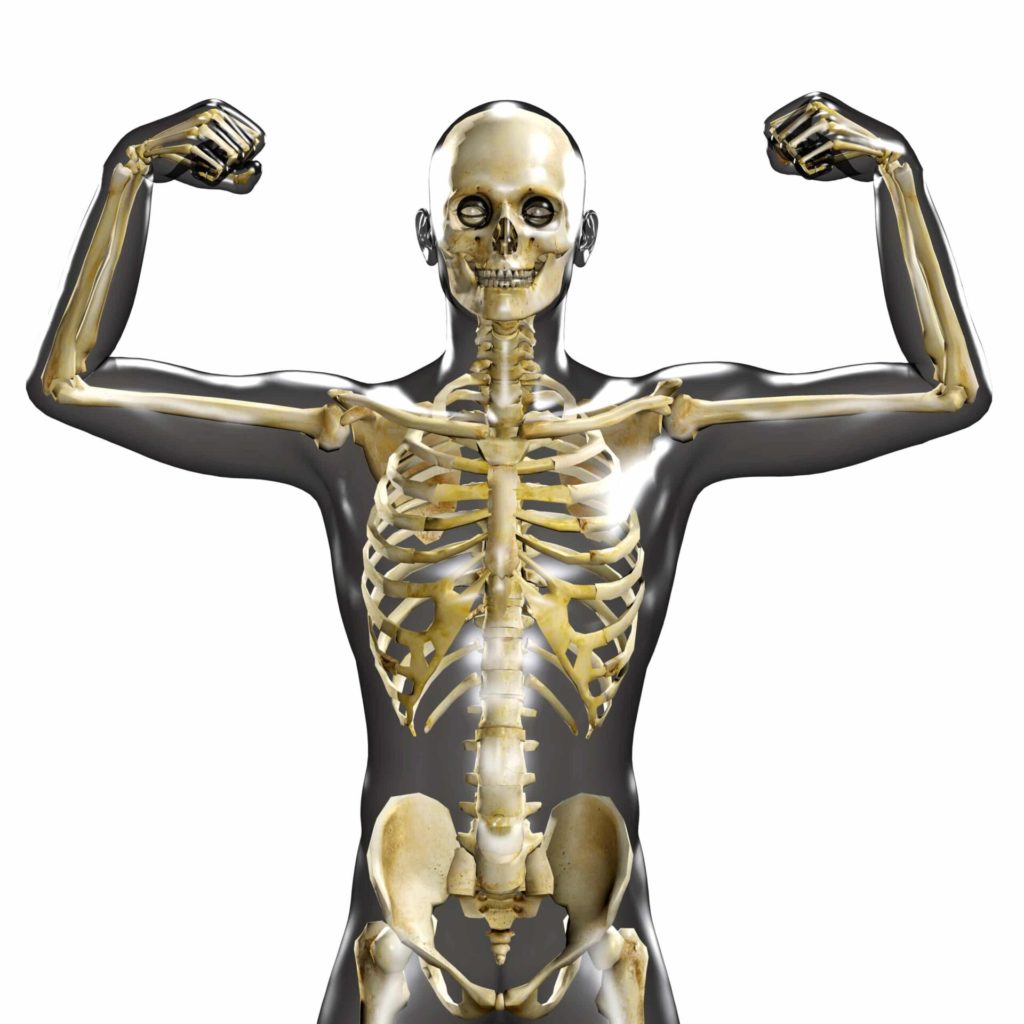
The Proven Ways to Avoid Broken Bones
OsteoFit Bone-Building Workshop
What you do today can make a big difference in bone health for years to come. Our physical therapists share their best practices and the treatments they recommend to their patients. Get real solutions for strengthening bones, improving balance, and reducing the risk of fractures. A must for anyone concerned about ongoing bone health.
Treating Osteoporosis
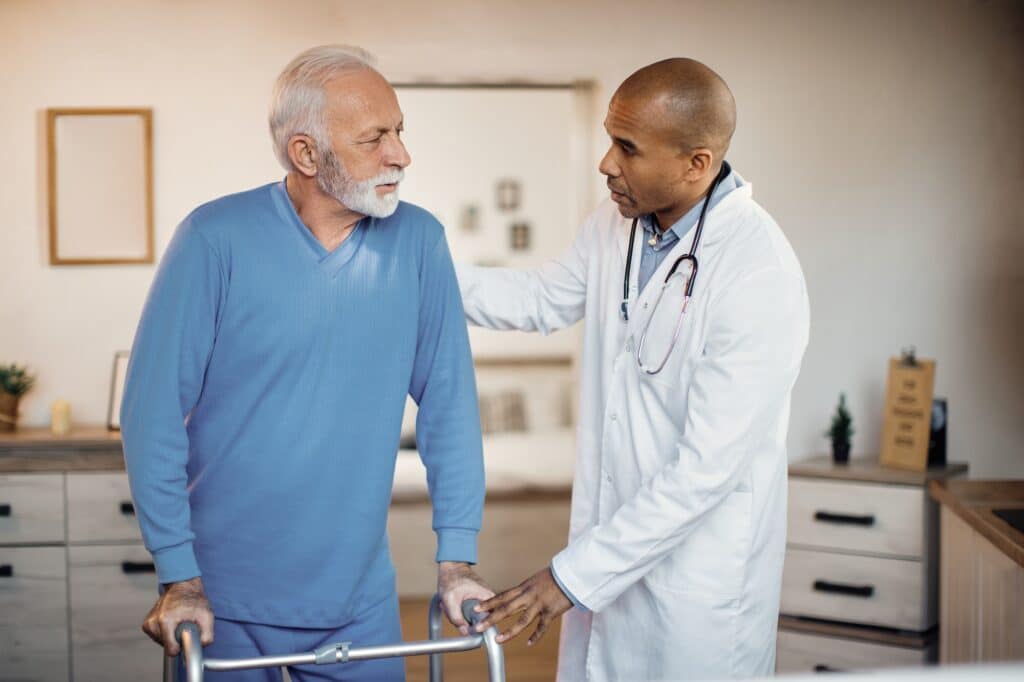
Osteoporosis is usually treated with medication, exercise, and lifestyle changes to help get the best results possible.
Medication
Your doctor may prescribe medications like bisphosphonates. These common osteoporosis treatment options can help slow bone breakdown or reduce the risk of fractures.4
Certain medications may be better for you than others, depending on your health history and other medications you may be taking. However, many older adults opt for diet and lifestyle changes instead of taking new medications when possible.
Exercise for Osteoporosis
Exercise is one of the best, most effective osteoporosis treatment options. For seniors, a structured exercise program can help improve bone strength and reduce the risk of fractures.
Many older adults choose physical therapy as their preferred method of osteoporosis exercise. PT can help by strengthening the muscles surrounding and supporting bones with appropriate medical guidance.5
Specific exercises may also improve balance and posture. Preventing falls that can cause fractures from osteoporosis should be central to your exercise program. Some examples of osteoporosis exercises you might try in physical therapy might include:
- Balance, mobility, and stability training
- Weight-bearing activities like walking or jogging
- Strengthening exercise with body weight, dumbbells, or weight machines
Your physical therapist will likely focus on bone-building exercises that fit into your daily life to maximize your bone health. Some clinics even use equipment to achieve the proper bone loading to help prevent and manage osteoporosis.6
Nutrition for Osteoporosis
In addition to exercise, make sure that your diet supports osteoporosis prevention. Your doctor may recommend eating specific foods like fortified dairy and dark leafy greens. The foods can improve calcium and vitamin D intake to help fortify your bones.
You may not get enough of these critical nutrients from your diet. Calcium and vitamin D supplements are among the best supplements for osteoporosis because they help support healthy and strong bones.
Following dietary recommendations can lower your risk of fractures and strengthen your bones for the long term.
Other Treatments
Suppose you have been diagnosed with osteoporosis or osteopenia or a history of fractures. If so, certain surgeries may be recommended to repair the fractures or stabilize bones at an increased risk of breaking.
However, surgery is often considered a last resort that is only used when other treatments have been unsuccessful. Discuss any procedure thoroughly with your trusted healthcare providers if you are considering surgery.
Osteoporosis Prevention
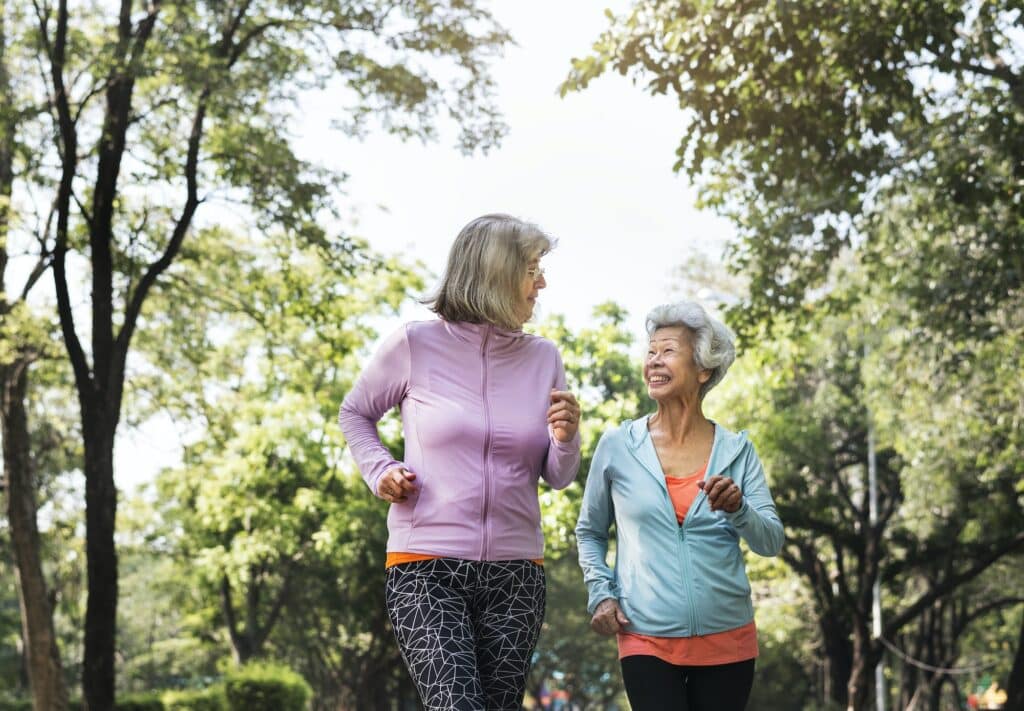
Maintaining bone health is vital for older adults to reduce the risk of fractures and other complications from these diseases.
Lifestyle choices for osteoporosis prevention are similar to those used to treat it. Eating right, getting adequate sunshine, and exercising are central to prevention.
Activity, A Healthy Diet & Sunshine
As a preventive measure, you should start regular exercise long before bone density issues develop. Increasing bone mass and density through weight-bearing exercises, even with your own body weight, is beneficial. This process, called “bone loading,” can help you maintain bone health and build stronger, healthier bones.
Some additional forms of bone-building exercise include weight machines, jogging, dancing, hiking, tennis, and pickleball.
While eating certain foods to prevent osteoporosis is essential, sun exposure is crucial for maintaining strong bones. When exposed to the sun’s ultraviolet (UV) rays, your body naturally produces vitamin D. This mineral is essential to the calcium absorption needed for strong bones.
Sun exposure can sometimes be better for us than even the best supplements for osteoporosis. Deficiencies that can arise naturally with aging or other conditions can also be better managed by getting enough sunlight.
Regular sun exposure can improve mood and inspire you to be more active, which is vital for maintaining bone density. Certain climates can prevent you from getting moderate sunshine. Talk with your doctor about using vitamin D supplements if you cannot get enough regular sunlight.
Prevention should also be a bigger priority if you have a family history of osteoporosis. Speak to your doctor about screenings, treatments, and preventative actions. Early prevention is vital if you worry about your bone health or your risk of these diseases.
Key Takeaways
- Osteoporosis is a widespread condition causing weak bones. It is prevalent among older adults, affecting over fifty million in the U.S.
- This disease arises when bones lose minerals like calcium faster than they can be restored, making them fragile and prone to fractures.
- Understanding and managing osteoporosis is vital for prevention and leading a healthy life. Focusing on knowledge about bone health and adopting appropriate preventive measures is key.
- Diagnosing osteoporosis primarily involves DEXA scans. These tests measure bone density, with supplementary methods like MRI scans, ultrasounds, and blood tests also used.
- Treatment strategies include medications, lifestyle changes, and structured exercise programs to strengthen bones and muscles and reduce fracture risk.
- Adequate calcium and vitamin D intake, through diet or supplements, is crucial for bone strength and reducing fracture risks.
- Regular exercise, nutrition, and sun exposure for vitamin D are essential preventive measures, especially for those with a family history or higher risk of osteoporosis.
- Early screening and preventive actions are crucial, particularly for higher-risk individuals, to maintain bone health and prevent osteoporosis-related complications.
FAQs
What Lifestyle Changes Can Reduce the Risk of Developing Osteoporosis?
To lower osteoporosis risk, quitting smoking, reducing alcohol intake, maintaining a healthy weight, engaging in weight-bearing and strength-training exercises, and consuming a diet rich in calcium and vitamin D are recommended. These steps are especially crucial for those with a family history of the disease.
How Does Age Affect Bone Density and the Risk of Osteoporosis?
Bone density naturally decreases with age, with women experiencing a more rapid decline post-menopause due to lower estrogen levels. Regular bone density screenings are important to monitor and manage this risk from middle age onwards.
Can Osteoporosis Be Reversed or Only Managed?
Osteoporosis primarily focuses on managing symptoms and preventing further bone loss. While bone density can be improved with treatment and lifestyle changes, complete reversal of osteoporosis is not typically possible.
How Effective Are Supplements in Preventing or Treating Osteoporosis?
Calcium and vitamin D supplements can be effective in supporting bone health, especially when dietary intake is insufficient. They play a crucial role in bone strength and density, aiding in the prevention and management of osteoporosis.
How Do Exercise and Physical Therapy Specifically Benefit Those with Osteoporosis?
Exercise and physical therapy, including weight-bearing and muscle-strengthening activities, improve bone density, enhance balance, and reduce fracture risk, making them vital components of osteoporosis management.
References
- Bone Health and Osteoporosis Foundation: Diagnosis Information https://www.bonehealthandosteoporosis.org/patients/diagnosis-information/
- US Food and Drug Administration: Osteoporosis https://www.fda.gov/consumers/women/osteoporosis
- Coughlan T, Dockery F. Osteoporosis and fracture risk in older people. Clin Med (Lond). 2014;14(2):187-191. doi:10.7861/clinmedicine.14-2-187 https://www.ncbi.nlm.nih.gov/pmc/articles/PMC4953292/
- Ensrud KE. Bisphosphonates for Postmenopausal Osteoporosis. JAMA. 2021;325(1):96. doi:10.1001/jama.2020.2923 https://jamanetwork.com/journals/jama/fullarticle/2774683
- Wallace BA, Cumming RG. Systematic review of randomized trials of the effect of exercise on bone mass in pre- and postmenopausal women. Calcif Tissue Int. 2000;67(1):10-18. doi:10.1007/s00223001089 https://pubmed.ncbi.nlm.nih.gov/10908406/
- A small amount of precisely measured high-intensity habitual physical activity predicts bone health in pre- and post-menopausal women in UK Biobank. International Journal of Epidemiology, 2017, 1847–1856. doi: 10.1093/ije/dyx080
- Link: https://osteostrong.me/wp-content/uploads/2020/01/A_Small_Amount_Of_Precisely_Measured_High-Intensity_Habitual_Physical_Activity_Predicts_Bone_Health_In_Pre-_And_Post-Menopausal_Women_In_Uk_Biobank.pdf
- https://www.bonehealthandosteoporosis.org/blog/cancer-and-osteoporosis/




